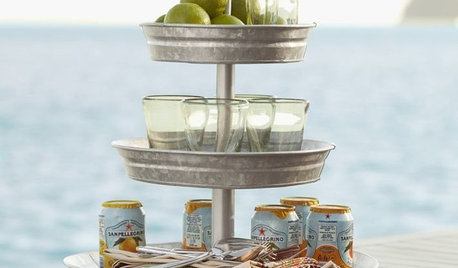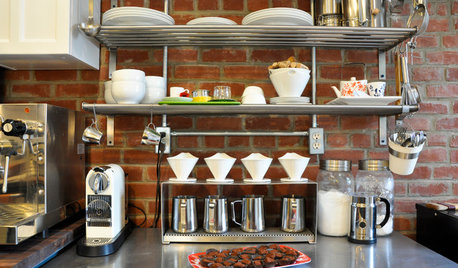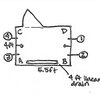Hot water heater setting & dishwasher?
aceh
16 years ago
Related Stories

GREAT HOME PROJECTSHow to Switch to a Tankless Water Heater
New project for a new year: Swap your conventional heater for an energy-saving model — and don’t be fooled by misinformation
Full Story
GREAT HOME PROJECTSHow to Add a Solar Water Heater
Lower energy bills without a major renovation by putting the sun to work heating your home’s water
Full Story
HOUSEKEEPINGTackle Big Messes Better With a Sparkling-Clean Dishwasher
You might think it’s self-cleaning, but your dishwasher needs regular upkeep to keep it working hard for you
Full Story
HOUSEKEEPINGDishwasher vs. Hand-Washing Debate Finally Solved — Sort Of
Readers in 8 countries weigh in on whether an appliance saves time, water and sanity or if washing by hand is the only saving grace
Full Story
PRODUCT PICKSGuest Picks: Set Up an Outdoor Living Room
With an outdoor movie screen, a patio heater or fan, and scads of entertaining essentials, you may never want to go back inside
Full Story
SAVING WATER11 Ways to Save Water at Home
Whether you live in a drought-stricken area or just want to help preserve a precious resource, here are things you can do to use less water
Full Story
GREEN BUILDINGWater Sense for Big Savings
Keep dollars in your pocket and preserve a precious resource with these easy DIY strategies
Full Story
GREEN DECORATINGEasy Green: Big and Small Ways to Be More Water-Wise at Home
These 20 tips can help us all make the best use of a precious resource. How do you save water in summer?
Full Story
HEALTHY HOMEHow to Choose a Home Water Filtering System
Learn which water purification method is best for your house, from pitchers to whole-house setups
Full Story
SHOP HOUZZHouzz Products: Set Up Your Dream Coffee Station
Wouldn’t it be nice to have your own café that never closes? With these tools and accessories from the Houzz Products section, you can
Full StoryMore Discussions









lazypup
dadoes
Related Professionals
University City Kitchen & Bathroom Remodelers · East Tulare County Kitchen & Bathroom Remodelers · Grain Valley Kitchen & Bathroom Remodelers · Plainview Kitchen & Bathroom Remodelers · Brentwood Kitchen & Bathroom Remodelers · Buffalo Grove Kitchen & Bathroom Remodelers · Glen Allen Kitchen & Bathroom Remodelers · Pasadena Kitchen & Bathroom Remodelers · Port Angeles Kitchen & Bathroom Remodelers · South Plainfield Kitchen & Bathroom Remodelers · Toledo Kitchen & Bathroom Remodelers · Trenton Kitchen & Bathroom Remodelers · Shaker Heights Kitchen & Bathroom Remodelers · Travilah Kitchen & Bath Fixtures · Paradise Kitchen & Bath Fixturesasolo
acehOriginal Author
Gayle99
jakethewonderdog
dadoes
pima74